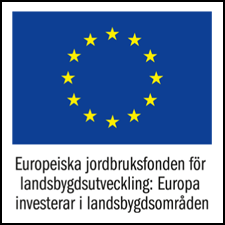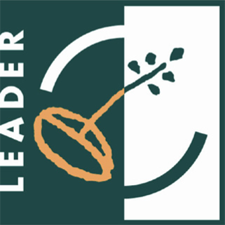DVA The Association
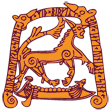
Destination Viking Associations
En interimstyrelse till denna organisation bildades 25.3 2007 under en långfärd buss med olika nordiska representanter. Det hela skedde efter ett årsmöte där organisationen NSLF hade övergått till den nya organisationen NOOAM. På väg hem till Foteviken blev vi i en fullsatt minibuss plötsligt väldigt kreativa och bildade då föreningen Destination Viking Association. I interimstyrelsen invaldes deltagarna i bussen, nämligen Geir Sör Reime, som valdes som interimstyrelse ordförande, Björn M Buttler Jakobsen som vice interim chariman, Mikael Härdig som interim sekreterare Helga Agustdottir från Island Sagaland som interim kassör. Till övriga interimsledamöter valdes enhälligt övriga i vikingatiden erfarna bussresenärer: Sven Rosborn och Susanne Buttler, båda från Fotevikens Museum samt Igrun Ragnarsdottier från Island.
På våren 2008 hölls ett nätverksmöte för NOOAM på ”Gunne gård” i Stockholm, Sverige. På mötet fanns representanter för hela Skandinavien. Vid detta tillfälle godkändes stadgarna för Destionation viking Associations och verksamheten drog i gång.
In November 2008, the Destination Viking Association was formed in Haugesund Norway. It has formally taken over the results and products of the three Viking projects. In parallel with this, an Interreg IVC Northern Periphery project called THING Project was approved, and upon its completion, the Destination Viking Association took over the results and products of this project too.
Jimmy Moncrieff ordförande
Björn M Buttler Jakobsen, vice ordförande
Paula Wilson, sekreterare,
Gun Bjursberg, kassör
Rögnvaldur Gudmusson, ledamot
Geir Sör Reime, ledamot.
Professor Dan Carlsson blev hedersledamot.
Så var vi då igång. Valet av Jimmy Moncrieff var en viktig länk i DVAs framtida succés. Det viktigt med Shetland Amenity Trust i ryggen skulle vi få en person som ordförande med rätta ekonomiska möjligheter och muskler att stå bakom organisationen. Då skulle vi också ha en del av finansieringen på plats.
På ett möte På Fotevikens Museum den 9 juni 2008 på ett styrelsemöte med Björn Geir , Paula, Geir och Jimmy var så Organsiationen i full sving
Nu hoppades vi att vi hade de muskler och resurser som behövdes för att sätta DVA på kartan.
O vi utvecklades. Allt fler organisationer slöt upp bakom DVA och det blev allt mer spännande att titta in i framtiden.
Se DVA story In 2012, the responsibility for the Council of Europe’s Viking Route was transferred to the Destination Viking Association, and the association also had a successful re-accreditation by the Council of Europe in 2015. Mycket av detta arbetet lade Jimmy Moncrieff grunden till.
Björn M Buttler Jakobsen med sina kreativa, ideer, kunskap. Med kunskap om media och hemsidesproduktion och sitt stora nätverk i de vikingatida kretsarna. Projektledare Baltic story, Öresundesproejkten, samt ansvarig för WP i de projekt Foteviken Museum varit involverade. i Jimmy Moncrieff resurser och vägar in i Européen Cultur route, och sina nätverkskontakter samt hela DVA Gruppen och styrelsen som egna medel och tid lagt ner all den möda för att skapa Destination Viking Associatioins för att de kvalitetssäkra Vikingaarvet för framtiden och definiera, analyser samt synliggöra det vikingatida kulturarvet runt om i Scandinavien samt framvisa - Var vikingarna kom ifrån och vart de reste.
2007 Bildandet av föreningen Destination viking
Vi hade varit på ett stort sammanträde med medlemmar för historiska verksamheter i Sverige och nu satt vi hoptryckta i en WV-buss på väg från Bohuslän till Malmö. Plötsligt började alla tala om att vi borde bilda en övergripande internationell organisation med enbart vikingaanläggningar. På motorvägen norr om Varberg kläckte någon namnet: ”Destination Viking”.
Vi körde av på en P-plats och stående på denna i snålblåsten från Kattegatt grundades föreningen. Styrelsen och ordföranden blev de som suttit hopträngda i minibussen. Hemkomna utskrevs det handskrivna dokumentet. Det är en kopia av detta jag har i mitt arkiv som ni ser på bilden.
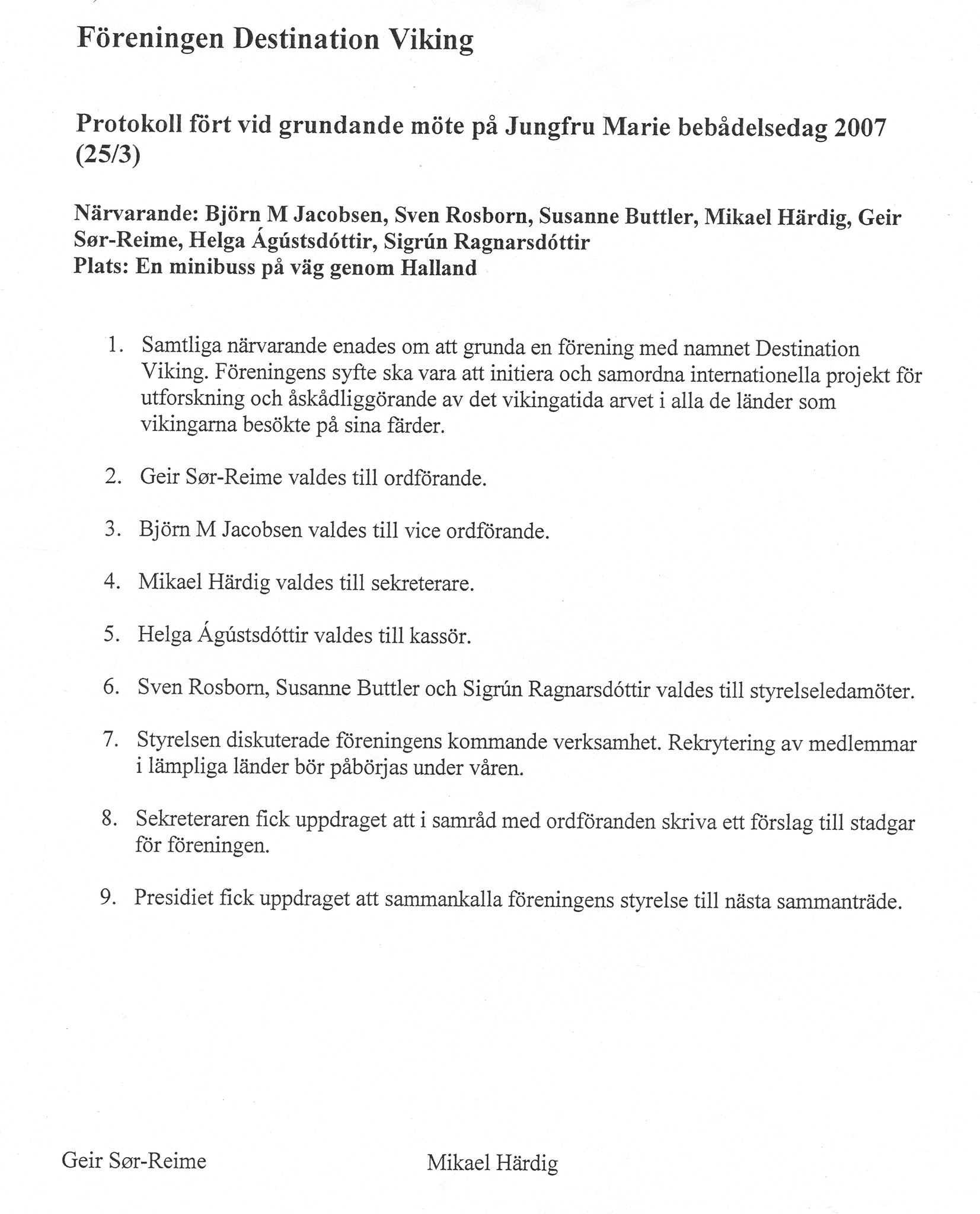
2007 mars 25 föreningen Destination Viking Association DVA bildades.. En interimstyrelse till denna organisation bildades under en långfärd buss med olika nordiska representanter. Det hela skedde efter ett årsmöte där organisationen NSLF hade övergått till den nya organisationen NOOAM.

2008 våren hölls möte för NOOAM på ”Gunne gård” i Stockholm, Sverige. Samtidsigt hade Destination Viking Association DVA möte med sina nordiska vänner. och här godkände man stadgarna för DVA som även de baserade på föreningen SVEGs ursprungsstadgar.
2008 juni 9 på DVA styrelsemöte i Foteviken var så Björn Geir , Paula, Geir och Jimmy som organisationen i full sving . Valet av Jimmy Moncrieff var en viktig länk i DVAs framtida succés. Det viktigt med Shetland Amenity Trust i ryggen skulle vi få en person som ordförande med rätta ekonomiska möjligheter och muskler att stå bakom organisationen. Då skulle vi också ha en del av finansieringen på plats.
2008 nov Haugesund blev så Destination Viking Association formelt grundat. Reda då var man involverad i tre Euprojekt.
2008 – 2016 Björn m Jakobsen Vice Chairman of DVA (Destination Viking association)
Destination Viking Association
An interim board for this association was founded in march 25, 2007 during a long bus trip with several Nordic representatives. It happened following an annual meeting where the organisation NSLF had been transformed into the new organisation NOOAM. On the way back to Foteviken in a full minibus, we suddenly became very creative and formed the Destination Viking Association. The people in the bus were chosen as interim board members: Geir Sör Reime, chosen as interim chairman; Björn M Buttler Jakobsen, chosen as interim vice chairman; Mikael Härdig as interim secretary; Helga Augustdottir from Iceland Sagaland as interim treasurer. As other interim members, the other people in the bus knowledgeable of the Viking Age were unanimously chosen: Sven Rosborn and Susanne Buttler, both from Foteviken Viking Museum, and Igrun Ragnarsdottir from Iceland.
In the spring of 2008 a network meeting for NOOAM was held at Gunnes Gård in Stockholm, Sweden. Present at the meeting were representatives from across Scandinavia. At this meeting the statutes of the Destination Viking Association were approved, and the work started.
In November 2008, the Destination Viking Association was formed in Haugesund Norway. It has formally taken over the results and products of the three Viking projects. In parallel with this, an Interreg IVC Northern Periphery project called THING Project was approved, and upon its completion, the Destination Viking Association took over the results and products of this project too.
Jimmy Moncrieff, chairman
Björn M Buttler Jakobsen, vice chairman
Paula Wilson, secretary
Gun Bjursberg, treasurer
Rögnvaldur Gudmusson, member
Geir Sör Reime, member
Professor Dan Carlsson became an honorary member.
Then we were up and running. The Choice of Jimmy Moncrieff as an important link for the future success of the DVA. It was important that, backed by the Shetland Amenity Trust, we would get a chairman with the proper economic abilities and muscle behind the organisation. We would also have part of the funding in place.
A board meeting was held at Foteviken Viking Museum on the 9th of June 2008, with Björn, Geir, Paula and Jimmy present, and with that the association was fully operational. We hoped to now have the muscle and resources needed to put DVA on the map. And we evolved, more organisations joined up behind DVA and the future seemed all the more exciting.
During the time when the Swedish NSLF network was started, Tomas Johansson also initiated the founding of EXARC in 2001, a European counterpart to the Swedish network.
At the founding of the Swedish network the goal was to develop the Swedish concept into an international concept. Thomas Johansson had this thought when he established a close collaboration with Martin Schmidt who was then head of the classic "Archäologisches Freilichtmuseum” in Oerlinghausen, Germany, and the Dutch archaeology student Roeland Paardekooper.
When this network became an association following a meeting in Lejre, Denmark in the spring of 2003, Björn was chosen as vice chairman, and shortly thereafter assumed the chairman role at the 2005 annual meeting in Foteviken, following Thomas' tragic death.
It was during the meeting in Lejre that Björn presented the possibility of EU projects as a way of future development for EXARC. Thus we would be able to continue working for quality assurance of not just Viking Age facilities, but also facilities across Europe working with different time periods. Questions concerning teaching and experimental archaeology would play a large role in this work. At Björns suggestion, Geir Sör Reime, with his large knowledge of write EU applications, was chosen to join the EXARC board.
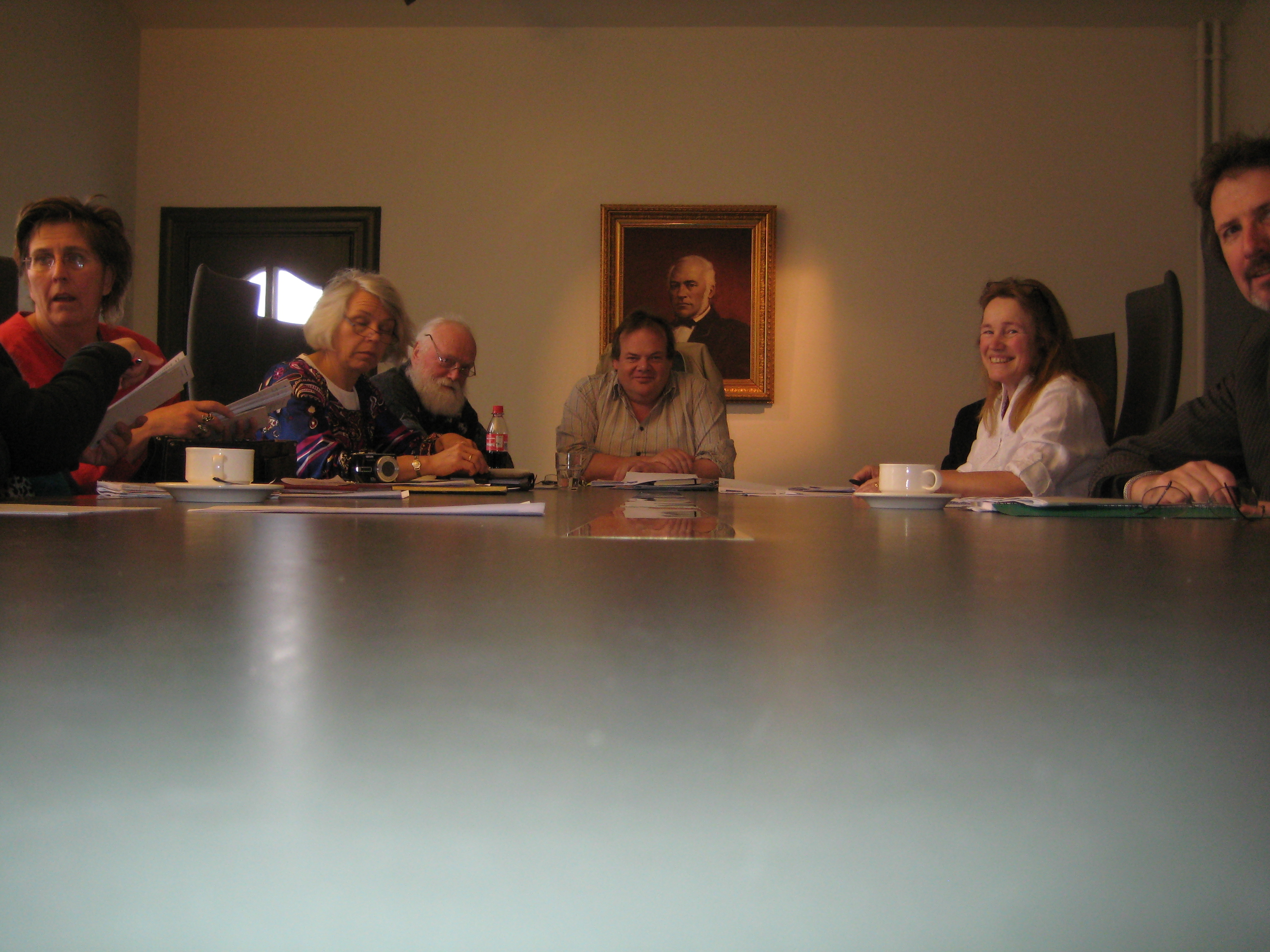
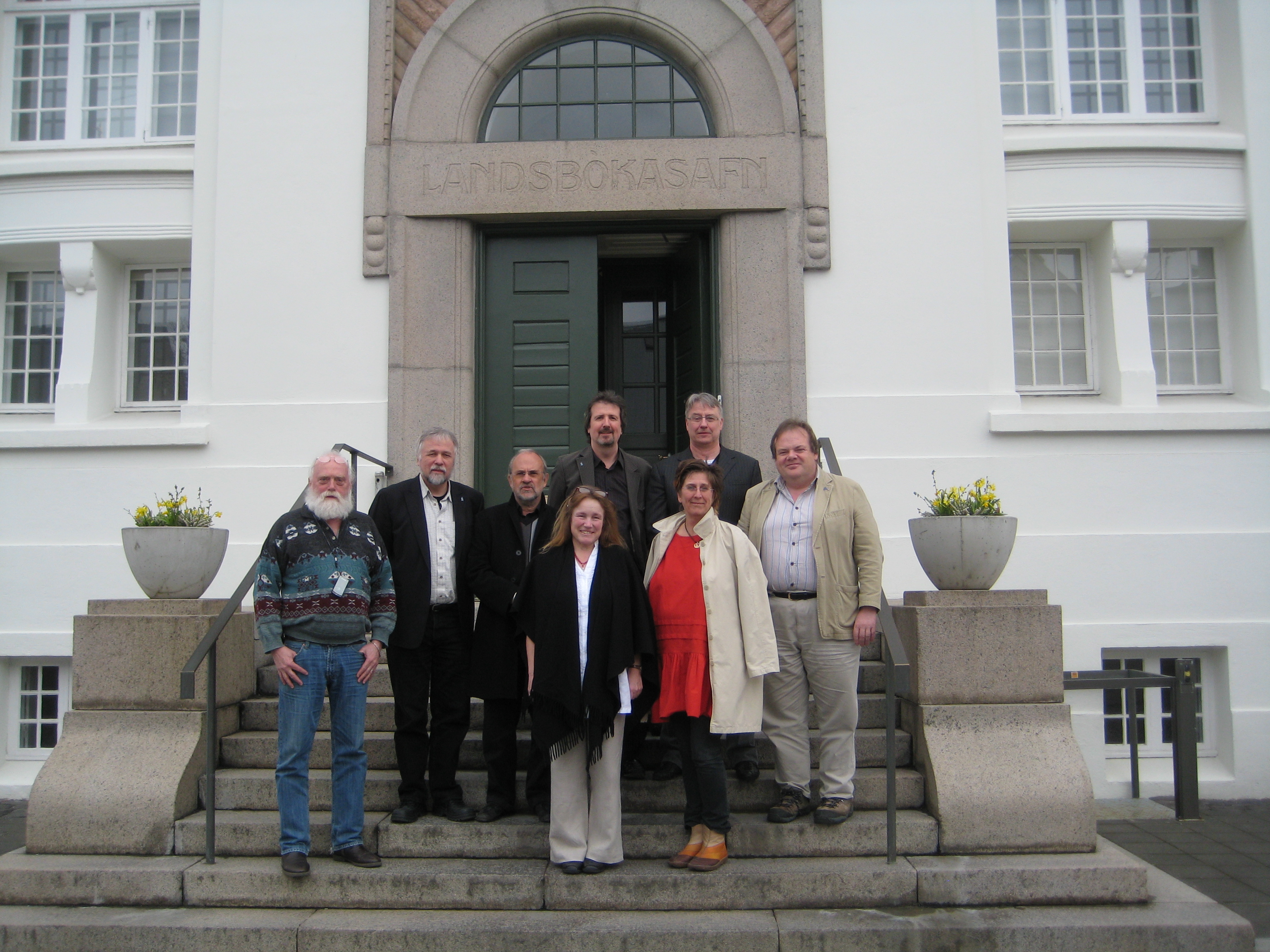
2017 - Björn m Jakobsen Chairman of DVA (Destination Viking association)
2018 - Björn m Jakobsen2019 Vice Chairman of DVA (Destination Viking association)
Step 2 – new projects
This first cross-border collaboration lead to 20 years of collaboration around history education and the Viking Age. We made plans. Foteviken Viking Museum received grants from the Region Scania council, and along with Geir, I embarked on a journey, mostly around Scandinavia, looking for future partners for upcoming EU projects tied to the Viking concept. On thir journey we met, among others, Rosala Vikings, headed by Paula Wilson, and established contact with the Lofotr Viking Museum through Geir Are Johansen.
The first project with this expanded group became the Destination Viking Baltic Sea, between 2002-2005. Within the EU Baltric Sea program, a large EU project was initiated within the programme Interreg III B: Destination Viking Baltic Sea. The Region Scania council acted as lead partner and Vellinge municipality managed the finances. Foteviken Viking Museum assumed the role of project leader on behalf of Region Scania.
At this time the archaeologist and museum veteran Sven Rosborn had joined as a powerful resource in the project work, and employee at Foteviken Viking Museum. Eight partners from four countries took part. The goal was to chart the Viking Age history of the local area around each museum, including source material studies and field work. An extensive book about Scania during the Viking Age was produced by Foteviken Viking Museum, based on extensive research work within the museum. The book was part of the project commitments of the museum. The project also included charting Viking Age remains and relics in the area around each partner, and development of a quality concept concerning so called Archaeological Open Air Museums.
Gunnes Gård was included among the partners with Anna-Cari and other staff before Gun Bjurberg joined and took the lead there. Trelleborgen in Denmark was part of the Slagelse museum group, lead by Ea Stevns Matzon. Ukranenland in Germany was also a partner, headed by Wolfgang Schubert.
Following a project trip to Iceland, the first Icelandic EU project was created: Destination Viking Saga Land, in 2003-2006. The project involved Foteviken Viking Museum with project grants from Region Scania, and the culture sector of Rogaland County Municipality in Norway. The project was about studies of Viking Age monuments and older tales and sagas of the Nordic periphery.
The project involved networking around Scandinavia, and laid the foundation for an Interreg III B project about the northern periphery. This involved northern Norway and Sweden, Iceland, Greenland, the Faroes, the Orkney Islands, Shetland and New Foundland. Representatives from Foteviken Viking Museum and Rogaland county municipality acted as consultants and scientific advisors. The project contained studies of the cultural landscape and integration of Viking Age remains in an overarching educational concept. Studies of old sagas and legends was another focal point. Thus it was natural for Iceland to assume the role of lead partner, with Rögnvaldur Gudmundsson as project leader. The ministry on Iceland was directly involved.
With Rögnvaldur in at lead the Icelandic Saga & Heritage Association was developed. (http://www.sagatrail.is). The Shetland Amenity Trust joined the group, with Val Turner and David Cooper as participants, and back then Jimmy Moncrieff was already in the background.
The next region for cooperation was the North Sea area and western Europe. We applied for the project Destination Viking Waterland, with the dutch enthusiast Jan Stobbe among others. In the project application was included partners from Holland, Belgium, the United Kingdom and others. Sadly the project stumbled at the finishing line and was rejected by the EU assessment.
At the same time we involved the network in several other EU projects around Europe, and not just tied to the Viking Age. This included projects like KNOT 2002-2006 (culture, nature and tourism). This project was about finding solutions for a digital map accessible online where people could search for knowledge and discover interesting places to visit. Exchange of experience was a large part of the project as all participants had been lead partners of their own prior projects. Geir wrote this application, and was also the project manager.
A few hectic years followed with several projects following each other. Geir and Björn were very active with the network that grew ever larger with new partners joining. Several organisations were founded across Europe.
Destination Viking is to become an organisation
At this time the first attempt is made or organise the Destination Viking projects into a uniform European organisation.The trip goes to the Isle of Man, with Dan Carlsson, professor at the university college of Gotland, who had worked with Viking Heritage projects. He was the founder of the Viking Cultural Route during the 1980s in the program concept European Culture Routes, and was behind the book Follow the Vikings. Along the trip was also Rögnvaldur from Sagalands association, our Dutch friend Jan Stobbe who we worked with during the Destination Viking Water Land attempt, and Steven Harrisson, who was culture and museum manager at the Isle of Man. The basic idea we had was to run Destination Viking Association as a foundation or company, as an organisation for Viking Age activities or attractions, based on the Isle of Man. The attempt almost succeeded.
Partners and other influences during development
During the time working with all these EU projects we made various partners, but also valuable contacts across Europe. Some of those include:
The Institute of ancient techniques 1980
An important event for Swedish experimental archaeology was when the Institute of ancient techniques was founded in 1980 in Östersund, Sweden. The initiator and enthusiast behind the project was Thomas Johansson and the activity was integrated into the Bäckedal people's college. Under his leadership the institute was developed into the the leading Swedish institution within its subject area. The institute worked not only with archaeology but also related disciplines of science, like nature science, anthropology and older crafts.
NSLF- The network Swedish Living Antiquity 1999
On the 26th of October 1999 all representatives of all ancient villages and experimental archaeology in Sweden gathered in Ås. Thomas Johansson and Harriet Löwenheim thus initiated the creation of the organisation Nätverket Sveriges Levande Forntid (NSLF). The association NSLF was founded and developed in a very creative and successful way. The network strengthened Sweden when it came to living history. Both the quality and knowledge increased, but sadly one of the driving forces behind it, Thomas Johansson, died in the summer of 2003. The institute under his leadership was one of the partners of the Sagaland project. The Gene ancient village in Örnsköldsvik, Sweden, with Agne and Maria Säterberg took over the partnership in Destination Viking Saga Land 2003-2006, while the role of chairman in NSLF was taken over by Björn. . A lot of work was put into increasing quality and knowledge among the roughly 40 members of the organisation. Many of these members also became partners in the following two EU projects with the Viking theme.
IOM Destination viking
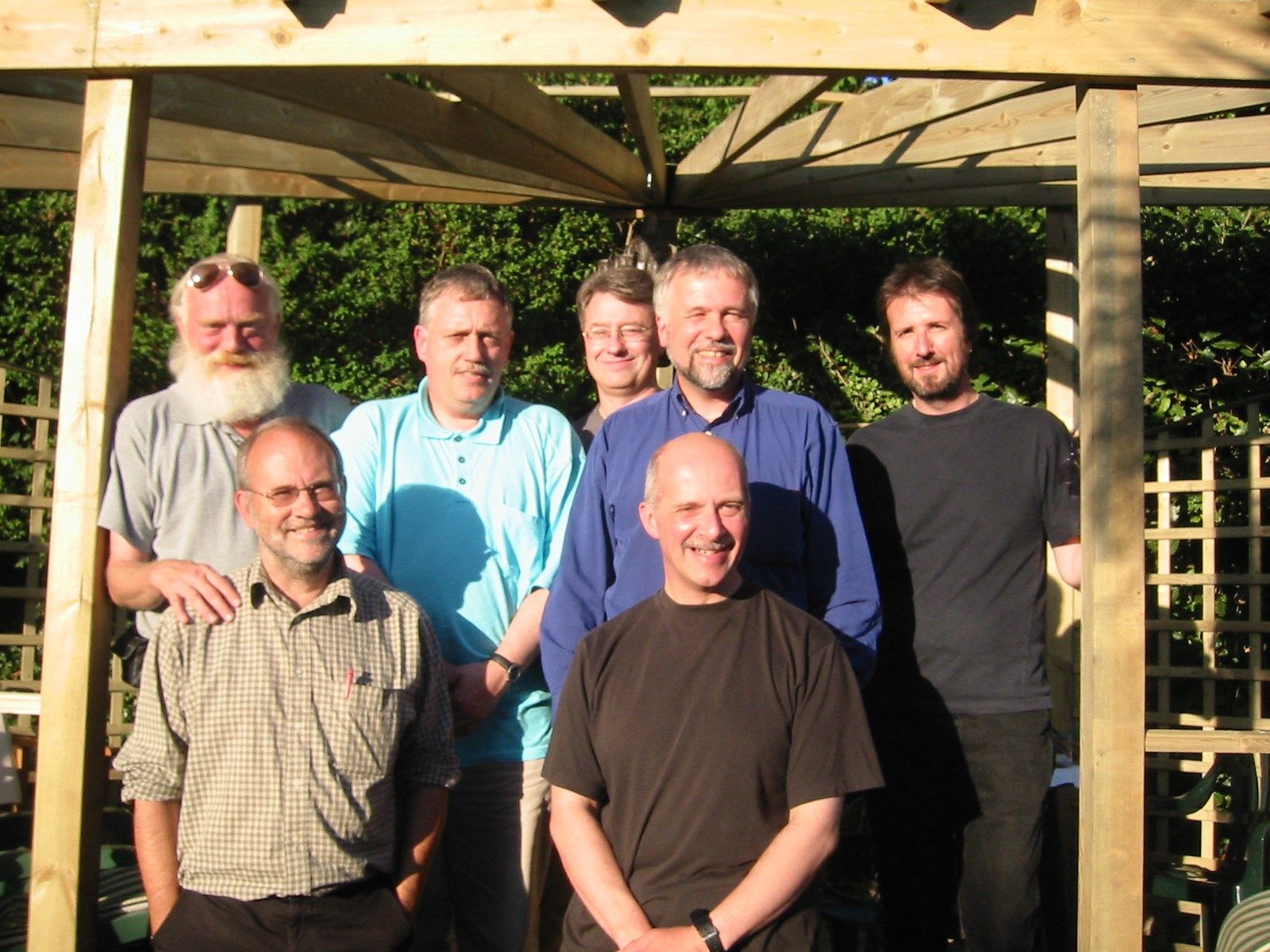

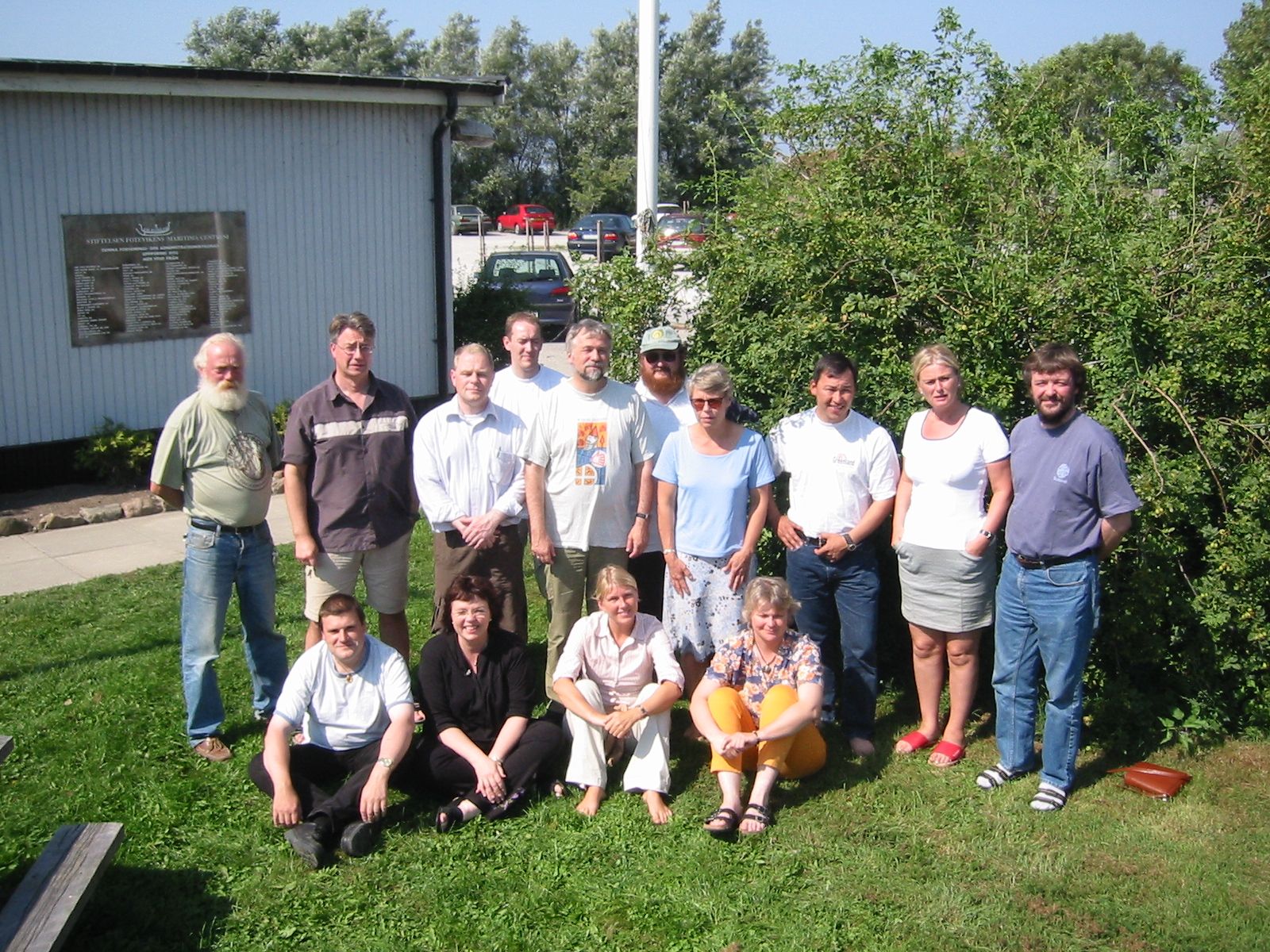
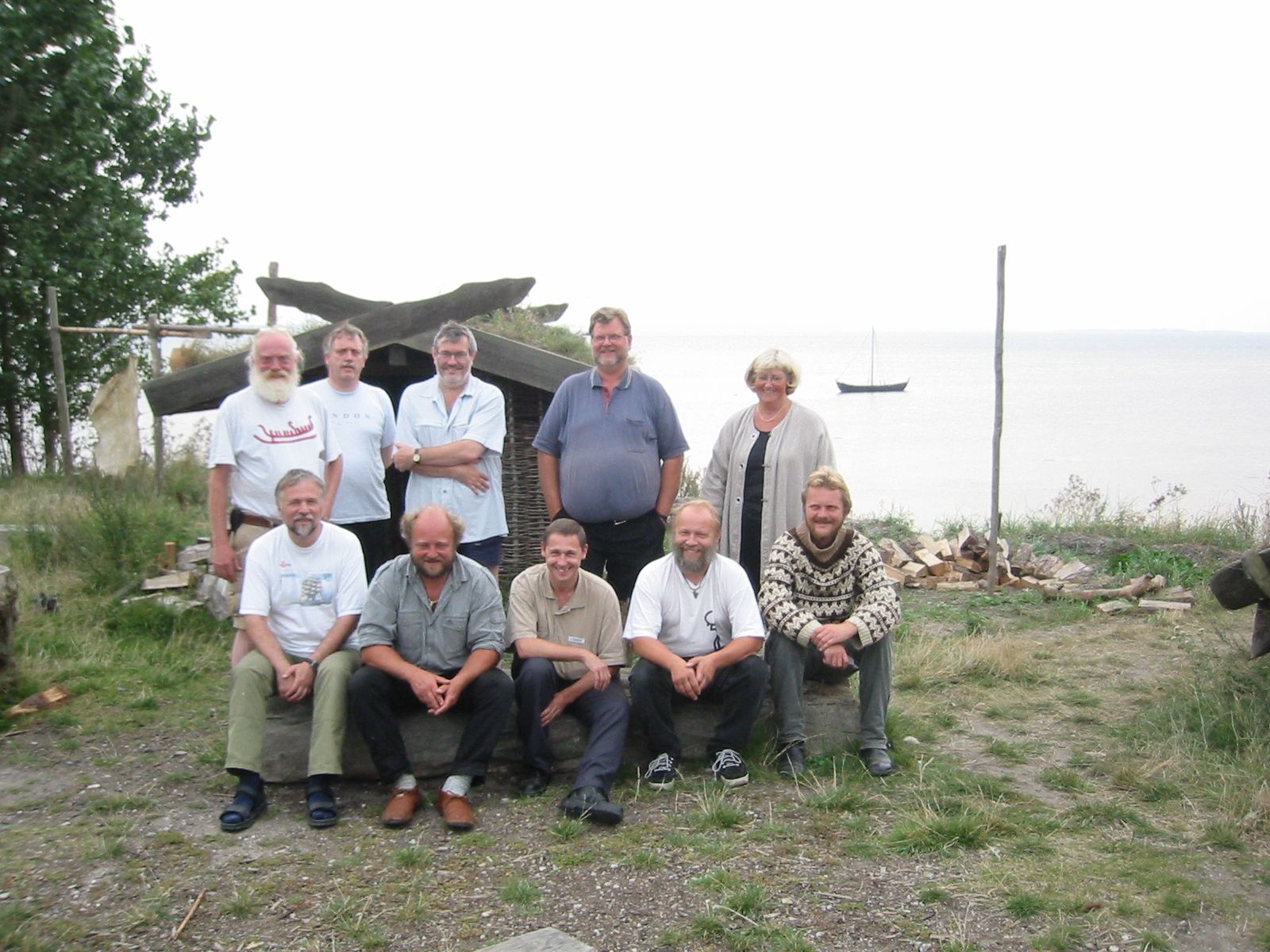
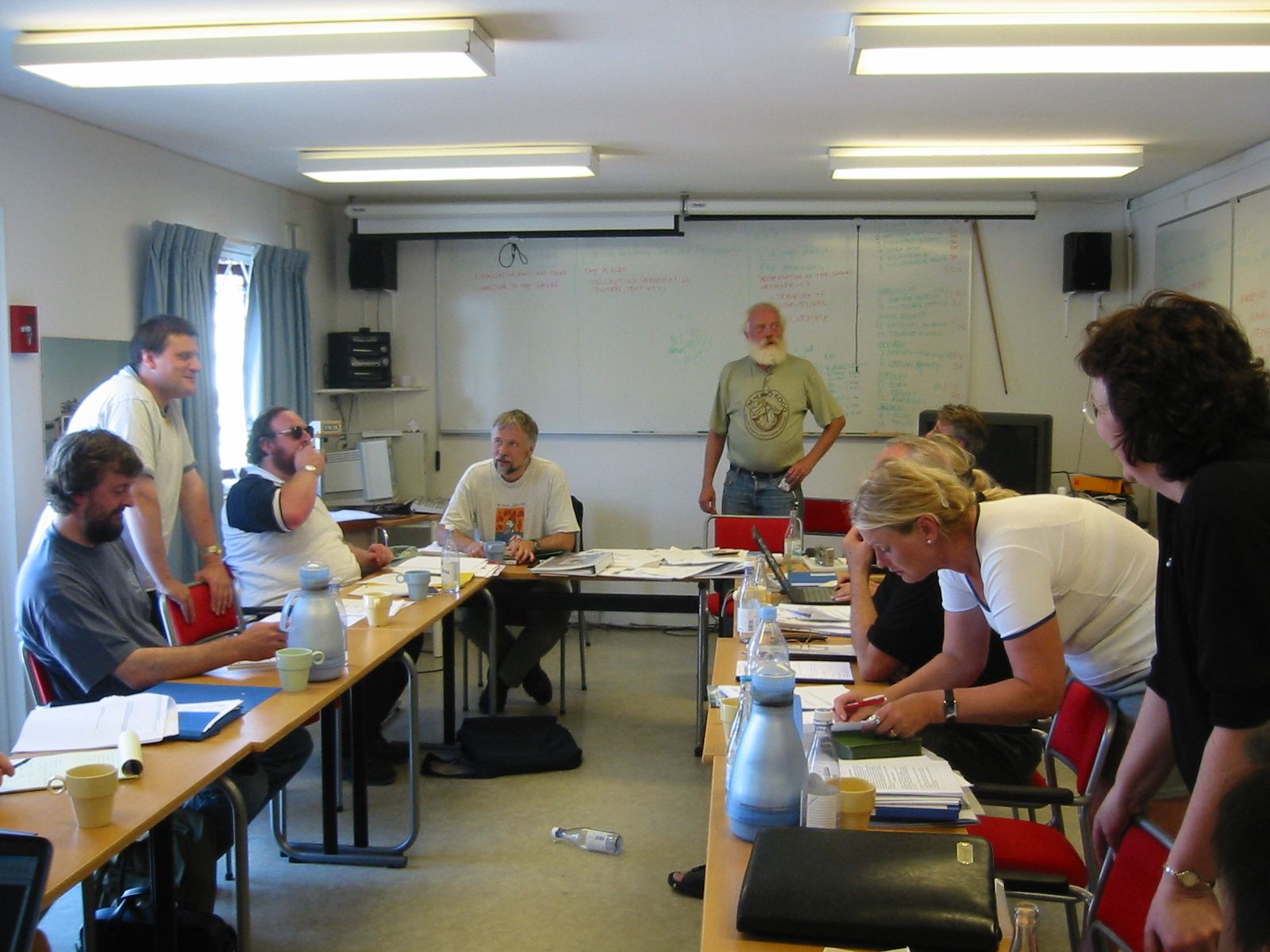
EU projects in parallel with EXARC
Aside from their involvement in EXARC, Björn and Geir worked on other similar projects. Many groups and organisations sought their experience for their own projects. This resulted in, among others, two very large and successful EU projects, LiveArch 2006-2009, and OpenArch 2011-2015. Several of the original Destination Viking Association members, and many new ones, joined in this work.
An important milestone in this work toward a common set of guidelines was reached at a large EU meeting with more than 200 museum people present within the LiveARCH project hosted at Fotevikens Museum on the 9th of November 2007. Here a consensus was reached to use the term ”archaeological open air museum”. Terms like criteria, guidelines, tool kits, marketing development plans and event coordination could now be grouped under a common umbrella and further develop archaeological open air museums in Europe and the world.
This project was followed up on with the EU project OpenARCH, a further development where questions regarding management and maintenance of historical facilities were included. This was also tied to the idea and followup of EU related projects with the goal of working with experimental archaeology, volunteers and collaboration between local museums, marketing and development of the Destination Viking concept both locally and globally.
Locally in the Öresund region via Leader and the Öresund Event Centre with Wonderful Copenhagen, the Foteviken Viking Museum in collaboration with Trelleborgen in Denmark succeeded in creating two projects involving the Viking Age facilities on both sides of the Öresund sound. They were Viking Games and Vikingarna kommer (The Viking are coming). On the Swedish side we brought in Vikingatider and Trelleborgen in Trelleborg, and on the Danish side the Fredriksund Vikingaspill joined. Fredriksund had an interesting connection as they had participated for several years in Catoira, our member in northern Spain.
A new European Destination Viking EU project was of course a necessity. With Geir as an engine in what had to be done to bring about a project, a fantastic board that met repeatedly in Brussels (among other places) to vent ideas and plan – what it took to achieve success.
CodeX, Viking Vision were some of the proposed names. It took a few years and a couple of failures where we missed a point to get our project approved. But finally in 2015, the association applied successfully to EUs Creative Europe program for a four-year project called Follow the Vikings (FTV), with 15 full and 10 associate partners. The main objective of this project was to continue the route development started by the previous projects (North Sea Viking Legacy, Destination Viking Sagalands, Destination Viking Baltic Stories and the Thing Project) and to further public interest in the Viking heritage and the Viking Route.
One component of this project was a professional road show to be performed at 13 locations during 2017-18. The project also includes the production of a new graphic profile, a new and interactive website combined with social media presenting the Viking route, a printed guide book and a series of graphic novels based on Viking stories.
The website guide and the printed guide book will incorporate the content of the four regional guide books produced by North Sea Viking Legacy and the three other projects (Sagalands, Baltic Stories, Thing), as well as content produced by the Viking Heritage organisation. Now in a new shape where Ben Baillie played an important role, taking over the Viking Heritage Magazine and turned it into a DVA newsletter called Hugin and Munin. Through FTV we could again develop and create a colour journal with a nice layout.
The membership in the Association has shown a steady increase and is now around 60, several of which are key Viking attractions like the Jorvik Viking Centre in York, the British Museum and the L’Anse-aux-Meadows Viking site in Canada. Also members are the Swedish and Danish National Museums, in addition to a number of Viking villages across Europe.
A meeting roughly 20 years ago with the EU expert Geir Sör Reime with his visions and knowledge of writing good applications. NSVL, Baltic Stories, Sagalands, NORCE, KNOT, LiveARCH, OpenARCH – applications written for all these projects and work as a consultant for projects. Project leader of NSVL and KNOT.
Björn M Buttler Jakobsen with his creative ideas and knowledge. Knowledge about media, website production and large network in the Viking Age sphere. Project leader of the Baltic Story, Öresund projects and manager of work packages in projects where the Foteviken Viking Museum has been involved.
Upon the completion of these two projects, plans were developed for a permanent organisation based on the partnerships of all three projects. Several meetings were held between interested partners, and finally, in November 2008, the Destination Viking Association was formed. It has formally taken over the results and products of the three Viking projects. In parallel with this, an Interreg IVC Northern Periphery project called THING Project was approved, and upon its completion, the Destination Viking Association took over the results and products of this project too.
In 2012, the responsibility for the Council of Europe’s Viking Route was transferred to the Destination Viking Association, and the association also had a successful re-accreditation by the Council of Europe in 2015.
In 2015, the association applied successfully to EUs Creative Europe program for a four-year project called Follow the Vikings, with 15 full and 10 associate partners. The main objective of this project was to continue the route development started by the previous projects (North Sea Viking Legacy, Destination Viking Sagalands, Destination Viking Baltic Stories and the Thing Project) and to further public interest in the Viking heritage and the Viking Route. A major component of this project is a professional road show to be performed at 13 locations during 2017-18. The project also includes the production of a new graphic profile, a new and inter-active website combined with social media presenting the Viking route, a printed guide book and a series of graphic novels based on Viking stories.
The website guide and the printed guide book will incorporate the content of the four regional guide books produced by North Sea Viking Legacy and the three other projects (Sagalands, Baltic Stories, Thing), as well as content produced by the Viking Heritage organisation.
The membership in the Association has shown a steady increase and is now around 60, several of which are key Viking attractions like the Jorvik Viking Centre in York, the British Museum and the L’Anse-aux-Meadows Viking site in Canada. Also members are the Swedish and Danish National Museums, in addition to a number of Viking villages around Europe.

